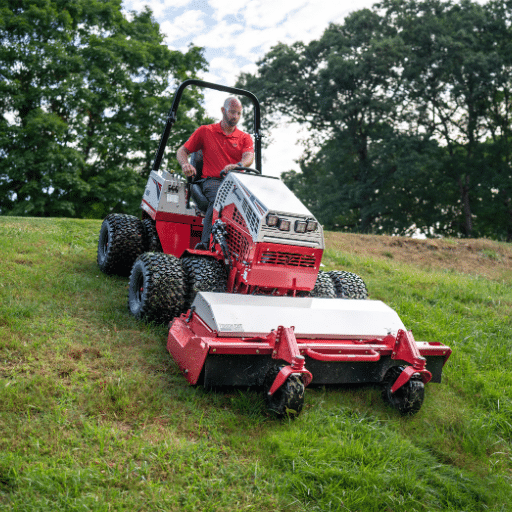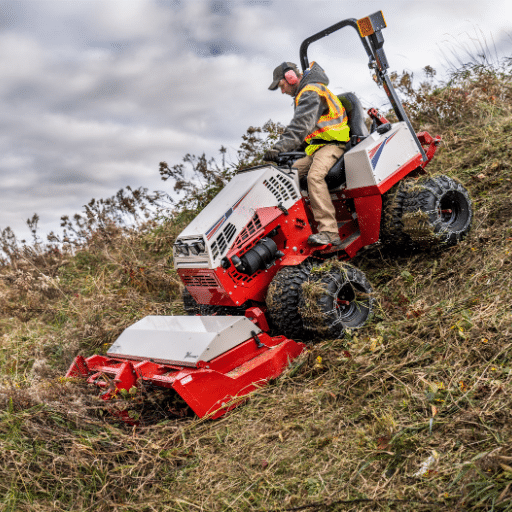In this blog, we take a look at the interesting history of making biscuits and the processes involved in making them from the basic ingredients in a unique way. Starting from site preparation and end dough manufacturing to its packaging, it is evident that these processes are interconnected in how they influence the taste and quality of the biscuits. We believe that this in depth study reveals the technology, the techniques and the team work needed in biscuit production which is indeed fascinating. If you want to know how biscuits are made, we have the descriptions of the techniques used at every stage of their production.
What is a Biscuit Production Line?

The Different Stages in the assembly of the Biscuit Production LinemustInclude
In the self-contained biscuit production line there are a number of self automated operations all aimed at producing large number of biscuit units in a sequence. It usually starts from the stage of mixing flour, sugar, fat, and other ingredients so as to obtain the mass. The next stage is forming, which involves the shaping of the mass into cakes by cutting or molding. The requisite texture and taste is achieved by baking in large industrial ovens. Control over the process is also necessary after freezing – the products must not lose their shape or freshness. The last stage involves packaging of biscuits units for sale thus marking the end of the production process. All these processes are standardized, where necessary, and all are under control, constantly or periodically.
The Role of Equipment in the Production of Biscuits and Crackers
Any biscuit production cannot do without the use of machinery since it imparts a degree of uniformity and speed to all processes. In the mixing stage, the ingredients are mixed through industrial mixers. At the forming stage, machines like rotary cutters and molds are used to form the dough. The texture and flavour are obtained in large industrial ovens in a relatively controlled baking environment. Cools conveyors are applied to allow gradual loss of heat as well as structure to the biscuit. Finally, packing machines pack the products that are ready for sale and distribution. The above processes are well or highly mechanized which leads to the production of good quality products with minimal risk of human error.
Types of Biscuits Produced
In an industrial environment, there are several types of biscuits which include plain biscuits, nut filled types, filled with cream, and even sour biscuits. For instance, plain biscuits including digestives and shortbreads are quite in appearance and mostly bland. Cookies are regular but often because of chocolate chips, nuts or fruit pieces added in to change the flavor and texture. Cream filled biscuits are appreciated for its unique blend of textures as crisp biscuit layers enclose creamy filling. Sourdough biscuits can utilize spices, herbs and even cheese to provide a balance against the sweeter variations. The market is well supplied with various forms and types of biscuits to meet different consumer preferences.
How Does Machinery Affect Biscuit Production?

Significance of a Dough Mixer
One of the most important functions in biscuit preparation is execution of efficient and consistent mixing of the constituents through the dough mixer, whereby the quality and the structure of the end product is greatly determined. It enables making the mixing together to more or less be the same and avoiding too many inconsistencies with the ingredients. Such a development brings about an improved operational efficiency and uniformity in the output of biscuit production lines, which eventually affects the taste and texture as experienced by consumers.
The Working of a Rotary Cutter
A rotary cutter operates by cutting the blended dough when it comes out of the machine. This operation is fundamental in obtaining similar biscuit shapes which helps achieve a uniform biscuit in baking and packaging. This particular cutting machine cut the desired weight and size of biscuits hence improving efficiency and minimizing the wastage levels in the production line.
Utilisation of Automation for Improved Production Efficiency
Putting in place automation leads to production efficiency gains in the biscuit industry. Owing to the repetitive nature of certain operations that computers carry out, human error is mitigated and production speed is increased. Owing to automated systems, quality is uniform since machines cut, bake and package the products in a quick and precise manner. Additionally, there is a reduction in manpower expenses while increasing productivity to meet the volume requirements of consumers. At the end of the day, adopting machines and technology in the biscuit making process makes it simpler, less expensive, and more efficient with regard to quality.
What are the Steps in a Cookie Production Line?

Initial Mixing and Forming of Dough
In a cookie line, dough is first prepared and partial dough is formed by blending ingredients with precision in powerful industrial mixers to achieve uniformity. After the mix is completed, the dough is molded in sheets or blocks relevant to the end product. Next, a rotary knife is utilized to divide the dough into equal forms which will be processed further. The next step after cutting is leavened dough that is further required to be cooked in baking ovens under strict control of temperature. The next sequence is cooling of the warm baked cookies, thus allowing them to settle down perfectly before packing. The last phase consists of low-cost, automated packaging machines that hermetically pack and applies a label to the cookies for distribution.
The Baking Oven Process Everyone Is Talking About
The last step requires placing the formed dough onto trays or a conveyor belt which moves into an industrial oven. This kind of oven consists of regulated parameters of temperature and humidity needed to brown uniformly the cookies baked within. These transformations make the dough expand and fix up its structure which guarantees that every cookie will have the proper shape and taste after baking. Cookies, once baked, are transferred straight away to the cooling zone so that they do not get cooked through the traverse heat.
Cooling and Packaging
Upon finishing baking, cookies are sent to a cooling space for them to cool down to room temperature. This practice ensures that the cookies, or their structural integrity, are not adversely affected. The cooling process is essential because otherwise there’s a risk that the cookies will be overly soft or crumble into pieces. After the cookies are cooled, they are transferred to a high-volume automated packaging line that includes sorting, counting and wrapping modules fitted with efficient packagers. Such machines pack the cookies securely in their packages to make freshness retention possible and to lengthen their shelf life, prior to preparing them for distribution.
How to Choose the Right Biscuit Machinery?

Aspects to Keep in Mind While Purchasing a Biscuit Machine
In choosing the biscuit machinery for your company, it is important that factors such as the production capacity which should meet the needs of the business output is put into consideration. Also, try to assess how many different types and sizes of biscuits the machinery can be automated and how easy the automated machines will be to operate. Utility costs and the amount of maintenance that will need to be performed are other considerations since they affect the total operational expenditures in the long run. Last but not least, do not forget that the biscuit equipment for sale has to comply with the relevant requirements and that the company provides adequate postsales services including training and availability of spare parts.
The Influence of Production Capacity
The production capacity has a noteworthy effect on the efficiency and profitability of a particular production process, in this case a biscuit manufacturing operation. The production capacity of a machine is specifically designed to ensure it is able to meet the required demand without incurring excessive usage of resources, which results in the optimization of output and the reduction of wastage. It modifies the quantity of biscuits being threaded in the specified period hence its influence on production scales as well as market supply capabilities. It is important that the machineries that are placed for production correspond to the present and expected level of demand to enable cost efficiency.
Biscuit Production Line Manufacturers – How to Find Trustworthy Ones
In identifying the best biscuit production line manufacturers, their standing in the industry, as well as the reviews of other customers about them, should also be put into consideration. Seek manufacturers who have quality machines, advanced technical know how, and all the services that accompanies these machines. Further, confirm that they provide design modifications or specials that are required to meet specific production requirements and their after sales service is adequate including: installation, training, and maintenance. Finally, assess their potential in terms of spare parts availability and their status regarding international standards and certification.
What are the Unique Features of a Soft Biscuit Production Line?

Specialized Forming Machines for Soft Biscuits
Working with biscuit dough that has high moist content, soft biscuit production lines usually consist of specialized forming machines that shape the dough. Gentle shaping of the biscuit allows it to keep its soft texture and its specific shape. Moreover, such lines can also use heat control on several levels which will allow them to bake the biscuits evenly while keeping them soft. The reliability and accuracy of these systems ensure that the end product meets the defined quality standards, which is crucial for consumer satisfaction and brand image in the competitive arena.
The Role of Conveyor Systems
Handling the movement of products in a soft biscuit manufacturing process, conveyor systems are of great importance for the transportation of dough and ready products from one stage of the technology to another. Such conveyors are built with the capacity to transfer soft biscuits in a delicate manner and minimize any disturbances to the product. Speed and timing of the systems can be controlled in order to establish the most efficient sequence of production and to enhance the uniformity of the final products.
Keeping the Biscuits Moisture and Softness
The maintenance of soft biscuits softness and texture in the course of production is achievable through the coordinated influence of certain factors over the entire manufacturing processes. Pertinent to this undertaking include critical temperatures in the course of baking to avoid over-cooking while avoiding excessive humidity so as to ensure that the biscuits retain their moisture content. Incorporating the right formulation ingredients that provide for softer texture of the biscuits, such as specific fats or emulsifiers, is also very important. Continuous observation and correctional measures on the production line contributes to the softness of the biscuits therefore attracting customers.
Can You Explain Cracker Production?

Cracker and Biscuit: Same Class But Different Kids
Compared to biscuit, cracker production exhibits many variances especially in the concentration of the ingredients as well as the method of baking. Crackers are notable for their thin, crunchier texture, and they also have a relatively less sugar and fat content compared to biscuits, Crackers such as Graham Crackers consist of raw ingredients that are nurtured in higher temperatures as well. This thick bread material is also called as dough. Moreover, it is most common to ferment the dough used for crackers which produces more rigid and fragile crackers. The only way to make the crunchier texture is allowing higher temperature settings along with longer baking times as considered in this case. There is substantial such difference between the texture of soft biscuits and the more coarse distinct product that we have just discussed.
Key Machines Used in Cracker Making
The most notable machines in cracker production are the dough mixers, which create a uniform mixture of ingredients; the laminator, which stresses the dough by folding; the sheeter, which molds and compresses the dough to the needed dimensions; and the oven, where the product is subjected to high temperatures for baking to create the crunchy texture. Other machines such as the cooling conveyors and packaging units perfect the work done by ensuring that the finished product is adequately cooled and packed ready for the market.
The Role of a Laminator
A laminator is crucial in the production of crackers, as it enhances the intralayer structure of the dough and gives the cracker its greater degree of flakiness. This not only reinforces the dough, but allows for the preferred flakiness texture in the end product which makes crackers more distinct as compared to other products like biscuits.
Reference sources
-
FoodsMachine.net – A Step-by-Step Guide to Setting Up a Biscuit Production Line
-
Loyal Machine – Unlocking the Secrets of the Biscuit Manufacturing Process
Frequently Asked Questions (FAQs)
Q: Define biscuit production line.
A: A biscuit production line in short is a chain of machines and other equipment that is made for the purpose of making biscuits in a systematic manner. Apart from the above, other processes also embrace mixing, forming, baking, and packaging in order to efficiently mass produce biscuits of superior quality.
Q: What type of biscuits can be manufactured from a biscuit production line?
A: A biscuit production line can be able to manufacture biscuit of various types such as soft biscuit, hard biscuit, sandwich biscuit, complete biscuit varieties among others. However, the production can be fine-tuned as per the requirements of the buyer.
Q: Explain how an automatic biscuit production line operates.
A: In simple terms, an automatic biscuit production line uses automatic machines to automatically carry out all processes, such as, biscuit dough mixing, biscuit baking, biscuit packing, etc. This leads to reduced manual effort and improved efficiency.
Q: What are the biscuit moulds and what is their purpose in the biscuit production line?
A: Biscuit moulds are tools that are employed to cut and shape the biscuit dough into uniquely designed biscuits. They form a crucial component of the biscuit machinery to make sure that the shape and size of such dough is similar in the end product.
Q: What is the importance of a cutting machine in the biscuit line production?
A: The use of the cutting machine in the biscuit production line serves the purpose of cutting the ready to be baked biscuit dough into the required shapes. It also helps in making sure that every single biscuit has the same size and form.
Q: How do the manufacturers benefit from having a fully finished biscuit production line?
A: A fully finished biscuit production line enables the manufacturers to produce a large volume of biscuits of the same quality in a completely automated and efficient manner. It minimizes human errors and cost of labor as well.
Q: Is it possible to modify the biscuit production line again?
A: Yes, biscuit production lines can be modified to suit the requirements of the buyers. Other manufacturers prefer to customize particular machines and designs for specific biscuit types and production volume.
Q: How is the biscuit production line of the hard biscuit’s distinguished from that of a regular biscuit’s production line?
A: The hard biscuit production line is used for the manufacture of hard biscuits which are processed differently from the soft types thus require modifications to the general line of processes. It is about specific methods of preparing dough with peculiar characteristics and baking.










